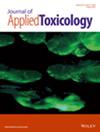Tissue Distribution of Methylmercury in Obese Pregnant Mice and Fetuses
Abstract
Despite the high frequency of pregnancies complicated by abnormal glucose metabolism associated with obesity, methylmercury (MeHg) metabolism in pregnant women with abnormal glucose metabolism is unclear. We aimed to elucidate the MeHg tissue distribution in obese female mice with abnormal glucose metabolism and their fetuses. Female C57BL/6J mice were fed a high-fat diet (HFD) or a standard diet (Ctrl) for 12 weeks and mated. HFD mice showed mild glucose metabolism abnormalities as assessed by an oral glucose tolerance test. Maternal tissues (brain, liver, and kidney) and blood (plasma and blood cells) and fetal tissues (brain, liver, kidney, and placenta) were collected from these mice 24 h after oral administration of MeHg (a single dose of 1 or 5 mg Hg/kg) on Day 16 of mating. The total mercury level was determined in each sample, and its distribution to each tissue was estimated using Kp values (total mercury in each tissue/total mercury in maternal plasma). The Kp values for the maternal brain and liver were lower in HFD mice than in Ctrl mice, but no significant difference between groups was observed in the kidney or blood cells. The Kp values for all fetal tissues were lower in HFD mice than in Ctrl mice. Pregnant mice showed higher Kp values for the brain and lower Kp values for the kidney than those in nonpregnant mice, regardless of diet. These results will provide useful information to assess the risk of MeHg in obese mothers with glucose metabolism abnormalities and their fetuses.

 求助内容:
求助内容: 应助结果提醒方式:
应助结果提醒方式:


